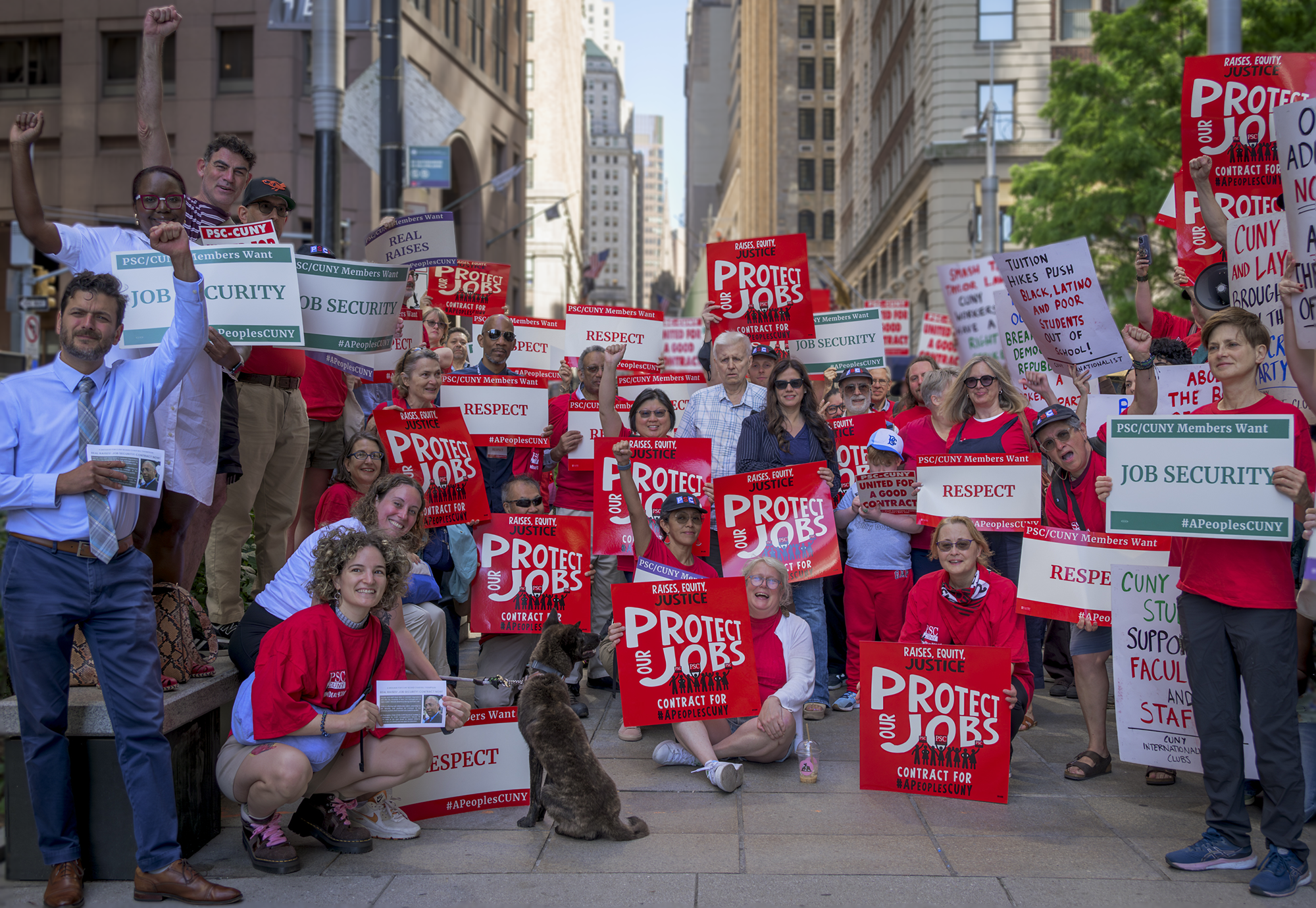Please note: The meeting place stated in the print edition of Clarion has changed. The PSC contingent will assemble at 56th St. and Broadway,
south of Columbus Circle.
_____________________
On September 21 thousands of people will demonstrate in New York City, in what is billed as the largest climate-change protest in world history. Hundreds of PSC members are expected to take part, demanding action to dramatically reduce the carbon pollution that causes global warming.
The People’s Climate March will take place on the Sunday before a week-long United Nations Climate Summit with government leaders from around the world. The PSC contingent will gather at 10:30 at 56th and Broadway. According to the UN website, the Summit will aim to “mobilize political will for an ambitious global agreement by 2015 that limits the world to a less than 2-degree Celsius rise in global temperature.” But past global conferences have not led to this kind of decisive action; with the pace of climate change accelerating, march organizers say global protest is needed to prevent a crisis from becoming a catastrophe.
City College’s Catherine Seavitt Nordenson, an associate professor of landscape architecture who works on coastlines battered by Sandy, will be one of the PSC members at the march.
“We need to work hard to heal our radically disrupted carbon cycle,” Seavitt Nordenson told Clarion. “Though my work is coastal and terrain-based, the real root of the problem is in the air, in the damaged atmosphere of our planet.”
Alarming Data
Seavitt Nordenson’s work is about responding to the effects of climate change, like rising sea levels. She’s currently working on a multi-university coastal resiliency project at Jamaica Bay, which seeks to improve water quality and circulation, enhance the edge of the coast and build salt marshes, measures that help decrease the intensity of waves and aid in carbon sequestration, removing some carbon dioxide from the atmosphere.
Seavitt Nordenson has seen how recent extreme weather events and droughts that have focused more public attention on climate change. “Katrina was a huge wake-up call, particularly the social inequalities that the storm revealed,” Seavitt Nordenson said.
It’s not only specialists working on environmental issues who are getting that wake-up call. Sean Sweeney, who co-directs Cornell’s Global Labor Institute, says many in the labor movement view the September 21 march as a “tipping point” for labor and global-warming activism.
“As more scientific data comes out, the more alarming the picture gets,” Sweeney told Clarion. “Those that don’t follow the science, they follow the weather. We’ve had Sandy and other extreme weather events in the US and around the world that are getting union members’ attention.” For example, subway workers who had to restore the system after Sandy now have a much deeper understanding of the consequences of global warming for NYC.
Things have come a long way since the AFL-CIO Executive Council opposed the 1997 Kyoto Protocol on reduction of greenhouse gases. Around 70 labor organizations have endorsed the September march, though the AFL-CIO is not one of them.
The PSC is one of the endorsing unions, and PSC Solidarity Committee Co-Chair Jim Perlstein is on the march’s mobilization committee.
“Most CUNY students come from communities of color, working-class communities, and these are the communities that are most threatened by climate change,” said Perlstein, who wants to make sure PSC participation in the September march is not a one-shot effort. “For us, the march is an opportunity to kick off a longer-term environmental justice project on CUNY campuses,” Perlstein said. (For more information, email him at [email protected].)
Green Energy Training
SEIU 32BJ, whose 145,000 members include janitors, doormen and building superintendents, is reaching out to its members with flyers, radio appearances, Instagram images and member videos online. To help its members take positive action on the job, the union has established a “green super” program, a training fund to educate building superintendents on reducing their buildings’ climate impact.
Global Crisis
IBEW Local 3, the electrical workers’ union, is another endorser of the march whose members are dealing with the issue on the job. Local 3 members work to retrofit buildings to reduce their climate impact and work on installing green power in newer construction. Members of the local recently refurbished a dilapidated Long Island motel to become the union’s solar-powered educational and cultural center.
Local 3’s Partha Banerjee, who teaches classes to members, hopes that a thousand of its members will attend the march. “We believe in a green energy and a futuristic jobs policy,” Banerjee told Clarion. “This is not really ‘our problem’ versus ‘their problem’ anymore. This is everybody’s problem.”
______________________________
For more on the protest, see the webpage for the People’s Climate March. You can RSVP for the PSC contingent here.
RELATED COVERAGE: Roving Reporter: Why I’m Marching on Sept. 21

